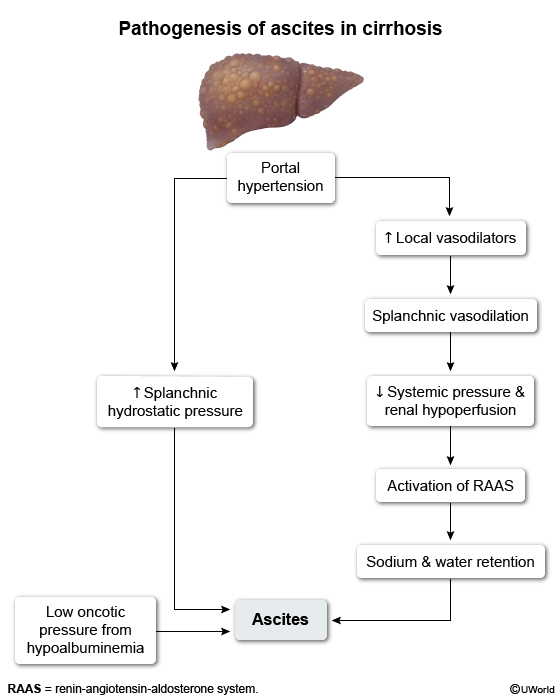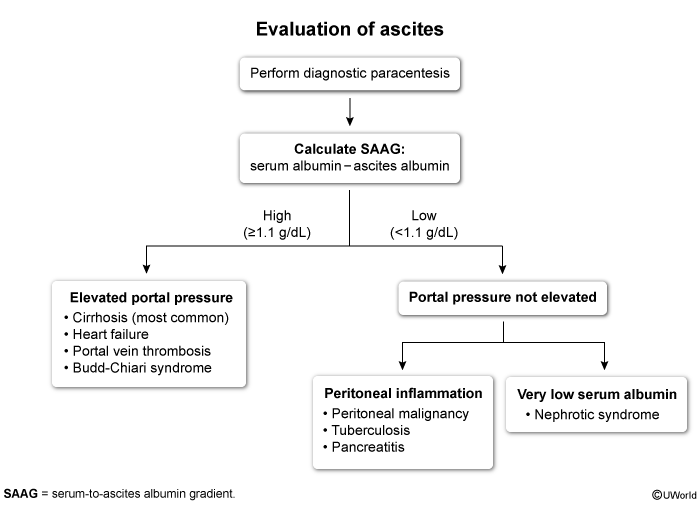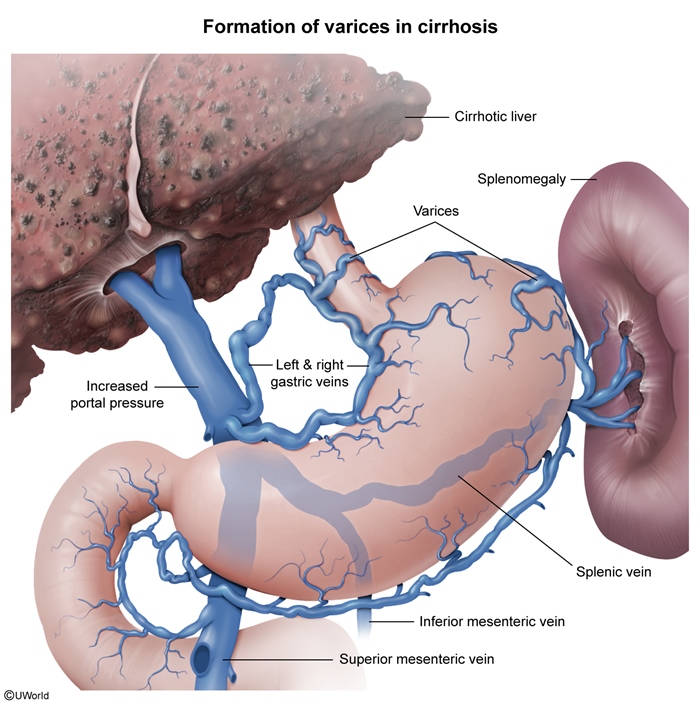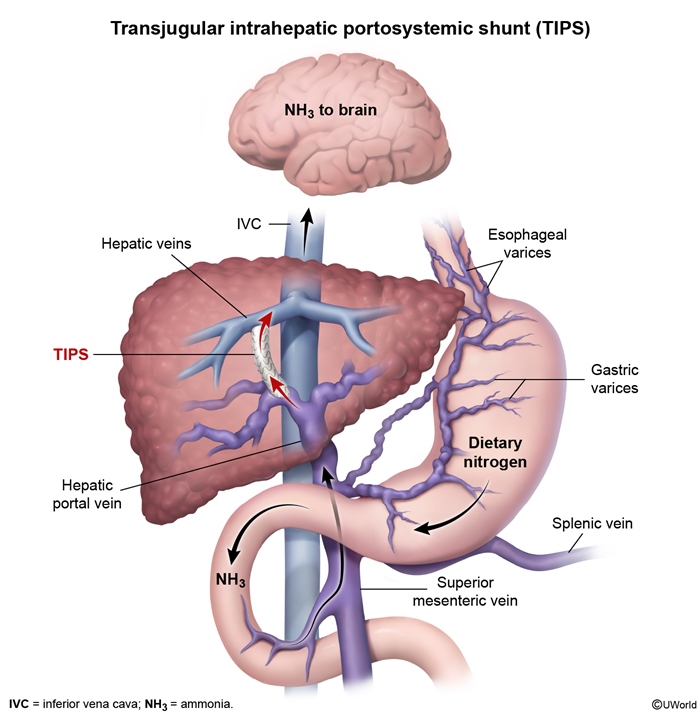Complications Of Cirrhosis
Article Sections
Introduction
The major complications of cirrhosis discussed in this article are ascites, spontaneous bacterial peritonitis, esophageal varices, hepatic encephalopathy, and hepatorenal syndrome. Causes of cirrhosis are discussed in separate articles.
Ascites
Ascites refers to the accumulation of fluid within the peritoneal cavity (Figure 1); it is often seen with cirrhosis (but can also develop due to other causes). Fibrotic changes to the liver induce resistance to blood flow, leading to increased portal pressure (ie, portal hypertension). Downstream hemodynamic effects on the splanchnic vasculature (eg, increased hydrostatic pressure, renin-angiotensin-aldosterone system [RAAS] activation) promote fluid and sodium retention, resulting in ascites. In addition, reduced albumin synthesis by the cirrhotic liver reduces osmotic pressure, causing fluid transudation into the peritoneal cavity.
Clinical features- Abdominal distension
Continue Learning with UWorld
Get the full Complications Of Cirrhosis article plus rich visuals, real-world cases, and in-depth insights from medical experts, all available through the UWorld Medical Library.
Figures



